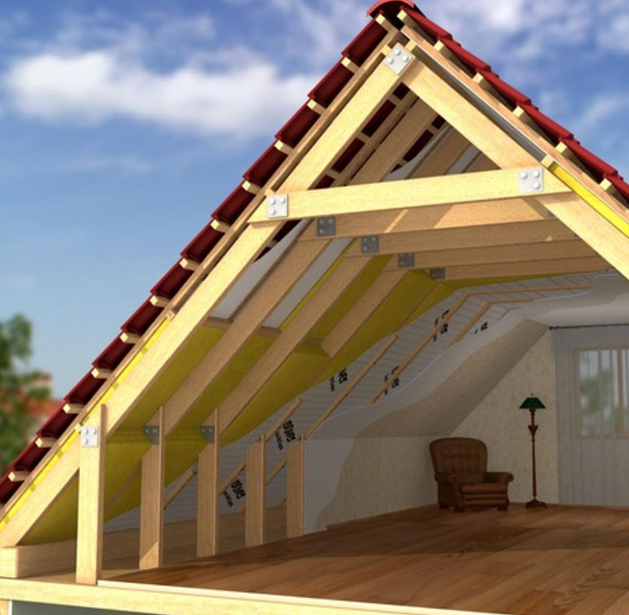Roof & Attic Insulation: Enhancing Home Comfort and Energy Efficiency
A well-insulated roof and attic are essential for maintaining a comfortable, energy-efficient home. Despite often being overlooked, the attic plays a crucial role in regulating indoor temperatures and protecting a house’s structural integrity. Proper insulation not only helps reduce heating and cooling costs but also contributes to a healthier living environment. In this article, we will explore the importance of roof and attic insulation, the types available, installation methods, and tips to ensure long-term effectiveness.
The Importance of Roof and Attic Insulation
The attic serves as a barrier between the interior of your home and the outside environment. During the winter, heat naturally rises and can escape through the roof if insulation is inadequate, leading to higher heating bills. Conversely, in the summer, a poorly insulated attic allows heat to penetrate living spaces, increasing the load on air conditioning systems. Insulating your attic and roof can significantly reduce these temperature fluctuations, ensuring a consistent indoor climate throughout the year.
Beyond comfort, insulation plays a critical role in energy efficiency. According to the U.S. Department of Energy, homeowners can save up to 20% on heating and cooling costs by properly insulating their attic and roof. This translates to substantial long-term savings while also reducing the household’s carbon footprint. Additionally, insulation helps prevent ice dam formation in cold climates, reduces moisture buildup, and protects roofing materials from premature deterioration.
Types of Roof and Attic Insulation
There are several insulation materials and methods available, each with its own advantages:
- Fiberglass Batt Insulation
Fiberglass batts are one of the most common insulation types. They are pre-cut panels that fit between attic joists and roof rafters. Fiberglass is relatively affordable, fire-resistant, and easy to install in standard spaces. However, it may not be suitable for irregularly shaped areas and requires careful installation to avoid gaps that reduce effectiveness. - Blown-In Insulation
Blown-in insulation, made from fiberglass or cellulose, is applied using a specialized machine that evenly distributes the material across the attic floor or roof cavities. This method is ideal for filling irregular or hard-to-reach areas and provides excellent coverage with minimal gaps. Blown-in cellulose insulation is often made from recycled materials, making it an environmentally friendly option. - Spray Foam Insulation
Spray foam insulation expands upon application, sealing gaps and cracks that may allow air leakage. It offers superior thermal performance and creates an effective air barrier. There are two types: open-cell, which is softer and more flexible, and closed-cell, which is denser and provides better moisture resistance. Spray foam is particularly effective in attics with complex structures or areas prone to drafts. - Rigid Foam Board Insulation
Rigid foam panels provide high insulation value and are commonly used in new construction or during major renovations. They can be applied directly to roof sheathing or attic walls and are especially effective in reducing thermal bridging. Rigid foam boards are durable, moisture-resistant, and help strengthen roof structures.
Installation Considerations
Proper installation is crucial for maximizing the performance of attic and roof insulation. Key considerations include:
- Air Sealing: Before adding insulation, it is important to seal gaps, cracks, and openings that allow air leakage. Common problem areas include around vents, pipes, and chimneys. Air sealing enhances insulation efficiency and prevents drafts.
- Ventilation: Adequate attic ventilation is necessary to prevent moisture buildup and maintain indoor air quality. Insulation should be installed without obstructing soffit vents, ridge vents, or gable vents. Proper airflow helps extend the life of roofing materials and reduces the risk of mold or mildew.
- R-Value: The R-value measures the thermal resistance of insulation material. Higher R-values provide better insulation performance. The recommended R-value varies depending on climate, roof type, and local building codes. Homeowners should consult guidelines to determine the optimal R-value for their attic and roof.
- Professional vs. DIY Installation: While some insulation types, such as fiberglass batts, can be installed by skilled DIYers, professional installation is often recommended for blown-in and spray foam insulation. Professionals ensure even coverage, correct R-value, and compliance with safety standards.
Benefits Beyond Energy Savings
Investing in quality roof and attic insulation offers benefits beyond immediate energy savings:
- Improved Indoor Comfort: Insulation stabilizes indoor temperatures, reducing cold drafts in winter and excessive heat in summer. This creates a more comfortable living environment for all occupants.
- Noise Reduction: Insulation materials absorb sound, minimizing noise from outside sources such as traffic, airplanes, or neighboring properties. Spray foam and dense fiberglass insulation are particularly effective for soundproofing.
- Increased Property Value: Energy-efficient homes with properly insulated attics are more attractive to buyers. High-quality insulation can be a selling point, especially in regions with extreme climates.
- Environmental Impact: By reducing energy consumption, insulation helps lower greenhouse gas emissions. Choosing eco-friendly insulation materials, such as recycled cellulose, further enhances environmental benefits.
Maintenance and Longevity
Roof and attic insulation generally have long lifespans, but regular maintenance ensures sustained performance. Homeowners should:
- Inspect insulation periodically for signs of damage, compression, or moisture intrusion.
- Address roof leaks promptly to prevent water damage to insulation.
- Replenish or replace insulation as needed, especially in older homes with degraded materials.
- Maintain proper attic ventilation to prevent moisture buildup and maintain indoor air quality.
Roof and attic insulation is a critical investment for any homeowner seeking comfort, energy efficiency, and long-term savings. From reducing heating and cooling costs to enhancing indoor air quality and protecting structural integrity, the benefits of proper insulation are far-reaching. Whether you choose fiberglass batts, blown-in cellulose, spray foam, or rigid foam boards, professional installation and thoughtful maintenance are key to maximizing performance. By prioritizing attic and roof insulation, homeowners can enjoy a more comfortable, sustainable, and valuable home for years to come.
